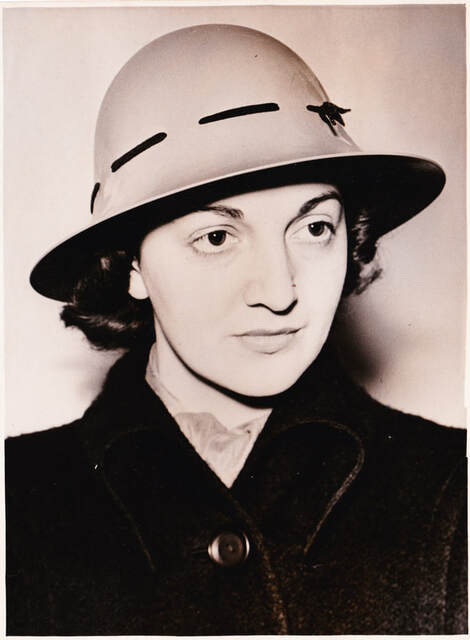|
The Civilian Protective Helmet (CPH) was designed specifically for use by civilians during the Second World War. The nickname – Zuckerman – was taken from one of its inventors, Solly Zuckerman (it remains uncertain if this name was used during the war years); the other designers were Hugh Cairns and Derman Christopherson. In October of 1940 the Ministry of Home Security noted the need for a new helmet for use by civilians. The CPH was chosen as the helmet to go in manufacture. The helmet was to be offered to the general public and businesses and the CPH would later became the main helmet issued to the Fire Guard Organisation of volunteer firefighters. Production commenced towards the end of 1940 and progressed into 1941 (though 1940-dated examples are much harder to find). The Treasury signed off on the expenditure of some £2,050,000 in November 1941 for the manufacture of a further 10,050,000 CPHs. The helmet was introduced in February 1941 (see publicity photo above) and general distribution appears to have commenced from mid-1941. Documents detail several names for the helmet being initially utilised: Industrial Helmet, Civilian Type Helmet, Alpine Helmet, Civilian Steel Helmet, New Protective Helmet, Civilian Grade 3, Steel Helmet-Home Security Pattern and of course ultimately the Civilian Protective Helmet. The high crown was designed to crumple under impact from falling debris. No chinstrap was issued (although two strap loops were fitted which differed in design across the manufacturers). A large number of manufacturers are seen on liners issued. The liner’s design and positioning were such that a chinstrap was not considered necessary (although several commercial chinstraps were for sale). The small holes in the brim, front and back, were used to run a wire through, holding piles of 10 helmets together for transit or storage. The holes around the crown were slightly angled enabling the helmet to sit lower at the rear. However, period photos often see the helmet worn back-to-front but it was more comfortable for the wearer (especially for women with a lot of hair). The helmet came in three parts: the shell, the liner (available in six sizes) and a lace to hold one to the other. The lace was threaded through the holes in the helmet and loops on the liner. It was a simple process that avoided the need to use helmet bolts and more expensive helmet liners. There was also an instruction leaflet on the assembly and fitting of the helmet. The helmets were made in two sizes either marked M (medium) or L (large) with three liners in different sizes for each helmet size. Several manufacturers received orders to produce the helmets causing different rims: rolled under, rolled up and a separate rim strip (the latter made by Rubery Owen).
Distribution demands were enormous and records suggest that whilst manufacture commenced in 1941 it took until early to mid-1942 for the helmets to be finally issued. It was sold to the general public for five shillings and sixpence. The slow release was caused by issues over pricing, who should pay (businesses or their staff), ordering processes, transport, storage and prioritisation. CPHs were issued in one colour only – grey – but many were painted white with black bands added for ranks within the Fire Guard Organisation. Some helmets carry the names and logos of companies as part of their ARP commitment. A great number of CPHs can be found marked with “FG” (Fire Guard) or “SFP” (Street or Supplementary Fire Party). Before manufacture ceased some 10 million Civilian Protective Helmets had been produced. Archives also show that consideration was given to a CPH being used as a helmet and visor. Two eye holes were to be drilled 2½ inches apart above the brim and the helmet was to be pulled down over the forehead. This idea was discontinued as it was felt that the improved frontal protection left the rear of the head dangerously exposed. When the Government was looking at plastic as a possible helmet solution, experiments were undertaken with plastic CPHs and at one stage coloured plastics were even considered with pink being suggested “for the ladies”. The plastic CPHs did not progress when it became clear that the new production processes were slow and costly. To date, no examples of the coloured plastic test CPH models appear to have survived. Whilst the CPH is generally overlooked by helmet collectors it is regularly found on Second World War Home Front re-enactor displays. Overall, although not one of the best-looking helmets produced during the war, it no doubt saved many lives. I am obliged to Adrian Blake for content and Nigel Abram for the images.
0 Comments
Your comment will be posted after it is approved.
Leave a Reply. |
Please support this website's running costs and keep it advert free
Categories
All
Archives
June 2024
|
|
|
Copyright © 2018–2024
|


 RSS Feed
RSS Feed